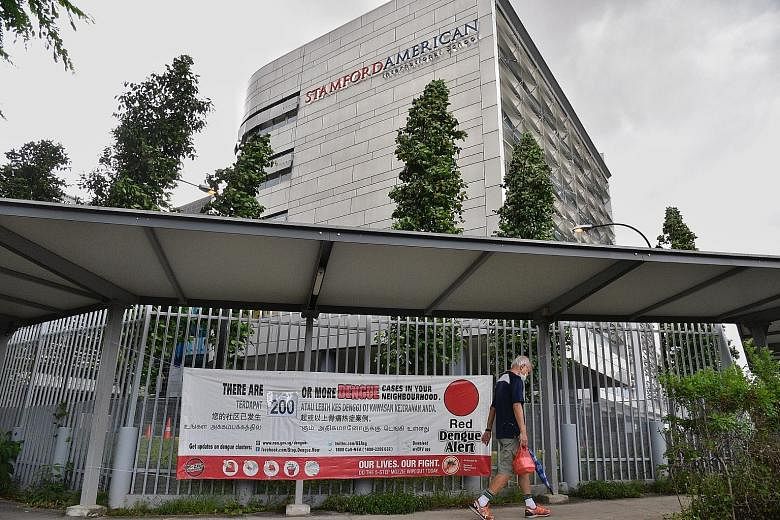Dengue cases have hit a new high, with about 200 new cases a day and two consecutive weekly tallies that exceeded all-time peaks.
Last week's 1,377 infections surpassed the previous week's 1,154, which was the first time weekly cases crossed the 1,000-mark in Singapore's history.
The rate of new infections is also unprecedented.
The National Environment Agency (NEA) is expecting total infections for the year to soar past the 22,170 cases recorded in 2013.
To date, 12,542 people have been infected with the mosquito-borne disease - and this is only the start of the traditional peak dengue season that lasts from June till October.
The number of infections so far is almost triple the median for the past five years.
At least 12 people, aged between 56 and 80 years old, have died from dengue this year. Ten were living or working in active dengue clusters.
There are now 269 active dengue clusters, with the majority in the eastern half of Singapore.
There are eight clusters where more than 100 people have fallen ill with dengue, with the Woodleigh area in Potong Pasir still the largest with 212 infections.
An NEA spokesman told The Straits Times that the huge increase in cases may be partly attributable to the two-month circuit breaker introduced from April 7 to curb the spread of Covid-19.
She said: "With more people staying at home, and the Aedes mosquitoes being day biters and harbouring indoors, there would have been more blood meals for the female Aedes aegypti mosquitoes, and this could have contributed to some of the recent increase in cases."
The female Aedes mosquitoes, which spread the dengue virus, need to drink blood to reproduce.
Another possible factor is the "reduction in some landscaping works due to manpower shortages and the cessation of the bulk of construction activities".
Worried about the higher number of breeding sites it has been finding in homes, NEA has raised the penalty from $200 to $300 if more than one breeding site is found or if the household has been alerted that it is part of a dengue outbreak.
The agency is also looking to scale up its Wolbachia programme to suppress the number of Aedes mosquitoes by releasing sterile male mosquitoes in dengue hot spots.
Eggs from female mosquitoes they mate with will not hatch.
NEA claims to have brought down the mosquito population at the release sites to a tenth of the original number.
The NEA spokesman said: "There are no large dengue clusters in the Tampines or Yishun release sites, as Wolbachia releases have suppressed the Aedes aegypti populations in both sites to levels that pose low dengue risk."
While successful, it is "not expected to significantly affect the outbreak this year", owing to the small areas where these mosquitoes were released.
NEA has built a new facility capable of producing five million sterile male mosquitoes a week - or 10 times its previous capacity.
About six male mosquitoes for every person need to be released for the programme to be effective, with regular releases at each site.



